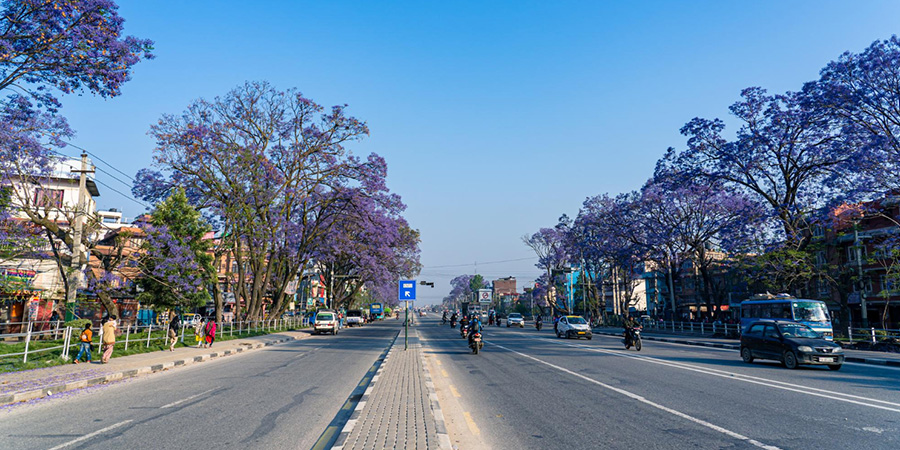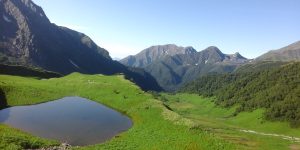One of the best things about the Indian Prime Minister, Narendra Modi’s visit was how Nepal trended on Twitter and other social media sites for positive reasons. It is very rare to remember an occasion where Nepal has been discussed positively, and Nepalis themselves have taken things positively. If one thing that PM Modi did very well were to be singled out, it was to ignite hope amongst Nepalis while also sending a clear message, that if you want change, it has to come from yourself.
MODI’S GLOBAL PLAN
After Jawaharlal Nehru, Modi would be the second Indian leader to harbor a dream to take leadership global. As a visionary, his dreams are big, centered around the idea of bringing back the Asian dominance of the 16th-17th centuries. He would like to work together with Japan, China and other Asian countries to redefine how the global economy will be shaped over the next 30-50 years. For his global ambitions, seeing the neighborhood right is important. Engaging with Nepal, Bhutan and Bangladesh is a low hanging fruit for Modi. Ensuring that the neighborhood prospers by providing a $1 billion credit line becomes really worth it when you secure the global ambitions of a $2 trillion Indian economy!
Modi also seems to be experimenting with credit lines and soft loans, the likes of which multilateral agencies provide. A credit line is what multilateral agencies have offered Nepal uncountable times in the past. If Nepal can actually use Modi’s credit line then we will not need to borrow from multilateral agencies that have currency risks attached to them. More usage of India’s credit lines would mean less use of multilateral money, which would ultimately result in questioning the importance and necessity of multi-lateral agencies in the first place. If Modi succeeds in getting Nepal to use his credit line, then he will surely spark questions on the necessity of global multilateral agencies in the entire region. Therefore, this is a great test case for him to work on.
STAYING IN SYNC
The challenge for Nepal now is to see how we sync with Modi’s vision. Nepal decided to release a postage stamp with a man who is trying to build information highways and use space technology to help the region. While all lawmakers applauded when he spoke, I am not sure how many really understood what he meant. How many have really thought of what will it mean to have integrated infrastructure or how we can convert borders into bridges? Many Nepali politicians have survived on anti-India rhetoric as their political agenda. How will that change now? What will be the future when the punching bag is gone?
Modi is talking about the generation of thousands of Giga watts of electricity. He is talking about millions of tourists. He is talking about the Himalayas as a center for global healing and holistic care. When zeroes increase, we Nepalis do not know how to react. Will we be able to rise to the occasion and consider the fact that we are talking about hydropower development of $10 billion, tourism investments of another $5 billion and infrastructure investments of $20 billion. When PM Modi announced a $1 billion credit line, everyone thought that was a big number. However, we would need a $20 billion credit line over the next five years to really get development moving. We did not seem to know that $1 billion is a small figure when it comes to a country’s development. This reflects what is big and what is small for us Nepalis.
ACTIVATING FORMAL CHANNELS
After Modi’s visit, it is important to ensure that we re-activate formal mechanisms, be it Joint Committees or new formal structures to deal with agreements and treaties. Nepalis love to work the informal way. The importance of political clout and politicians themselves will be reduced if such structures are implemented. But we cannot sacrifice long-term interests for short-term gains. Similarly, with regards to investment and business, there have to be working groups that will work to ensure more movement of trade and investment between the two countries. It is difficult to understand how the protectionist private sector will accept more foreign investment or how people thriving on the informal trade of oil along the border will accept the decision of a pipeline. We need to find newer mechanisms to engage with serious folks in the business community. The current structures of delegations that focus on photo-ops rather than real reforms will not go a long way in bringing about change in the way we deal with trade and investments.
IMMEDIATE STEPS
If the politicians who thumped tables in Parliament during PM Modi’s address on Sunday really mean to follow up on what he said, the key litmus test will be whether they appoint an ambassador to India with the utmost urgency. Why can’t someone be named before August 15th, India’s Independence Day? With Modi’s departure, the festival is over. The time is for action. Action to ensure that we first understand the implications of this visit, make plans to build on the euphoria it has generated, make plans to build teams who will help follow through and take all necessary steps to implement the plans.
Here is a unique opportunity to make Unleashing Nepal a reality, we should not miss it.







